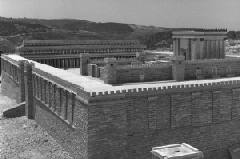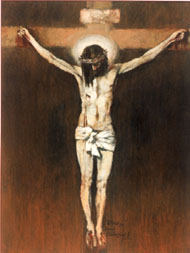|
PONTIUS PILATE & CRUCIFIXION |
|
HOME CUISINE ENVIRONMENT INSURANCE HORSES LEGENDS LAW NEWS PRODUCE RIGHTS SITE INDEX TRANSPORT WHISTLEBLOWING |
|
The
Temple Mount Jerusalem Pontius Pilate, the new procurator, brought Roman army shields and standards into Jerusalem, he issues coins with pagan symbols, and treated Jews with contempt. This eventually caused riots. Sporadic fighting between the city's Jews and the Roman soldiers ensued. Finally, reinforcements are brought to Jerusalem during the three annual festivals when the city if full of pilgrims. Major religious parties included the Pharisees, the Sadducees and the Essenes. However, the Romans could not beat the spirit of the people, or the stories of the atrocities which survive to haunt them forever. Nor can English council's hope to get away with treating ordinary people like second class citizens. Councillors in the Wealden District try to 'wash their hands' of victimisation, harassment and other wrong doing, leaving officers to crucify poor unfortunates. The agenda is to keep house prices artificially high, and preserve a system where mates (favoured developers) and wealthy landowners get planning consents for favours, back handers, brown envelopes and the like. Nothing seems to have changed much since Roman times. The planning process, appeal system, etc is nothing short of forcing a person to carry his cross to be crucified. Jesus, carrying his cross, was led from Caiaphas' house. A man was passing by who had just come in from the country. His name was Simon, he was from Cyrene and he was the father of Rufus and Alexander. The soldiers commandeered him to carry Jesus' cross and to follow them. Condemned to die with Jesus were two other men, criminals, and they became part of the procession winding its way through the streets. A large crowd followed. As they went, some women in the crowd lining the street filled the air with their wailing and crying. Jesus spoke to them: "Don't spend your tears, women," he said. "Save them for yourselves and for your children. In the days ahead the childless woman will be considered lucky. When the endtime comes men and women will be calling on mountains and the hills to cover them. If they do this when the tree is green, what will they not do when it is dry?" They arrived at a place called in the Hebrew, Golgotha, "The place of the skull." The soldiers offered him a drink - a drug mixed with wine. Jesus tasted it and shook his head. They crucified him with the two brigands, one at his right and other at his left. It was about nine in the morning. At the foot of the cross the soldiers began to rip up his robes, drawing lots for first choice of the pieces. When they came to his tunic, which had been woven without a seam, one of them suggested, "Let's not tear this up. Let's draw lots for all of it." Thus, they unwittingly fulfilled the scripture, They divided my clothes among them and cast lots for my robe. Before elevating the cross, the soldiers fastened a sign to the upright above his head and wrote on it the specifications of his crime: "He dared to stand up for his right to build a life on British soil."
"Forgive them, Father, they don't realize what they're doing." WHAT'S IT LIKE TO BE CRUCIFIED? The Romans perfected the art of being crucified, which was invented by the Persians in 300-400 B.C. It is arguably the most painful and torturous death ever invented by mankind. In fact it was so painful that a new word had to be created to describe it. This is where we get the word "excruciating", literally meaning "out of or from the cross". Officers of Wealden and other Councils across England and Wales have learned how to draw out the ruination of planning victims long and slow - much the same as a crucifixion, but over an even longer period, and without harming the body at all - just the life, mind and bank balance of their victim. Christ had to hoist the cross up onto his raw and shredded back, or what was left of it. Then carry it up the hill in his weakened condition. We see in scriptures how weak he had become in that he could not carry it without the aid of another man. Usually the person being crucified would only carry the crossbeam (75-100 lbs.), which would be later attached to the main vertical beam after he had been nailed to it. The spikes used to crucify the victim were approximately 7 to 9 inches long and filed to a point. They would be driven through the wrist about an inch below the palm of the hand. Medically defined, this point was between the radius and ulna and the small bones of the hand, the carpal bones. This was done because if driven into the palm of the hand the weight of the victim would be sufficient enough to rip the hand from the nail and then the victim would fall off the cross. Driven through the wrist ensured this would not happen, as the nail would rip through until it jammed against the Carpal bones. The nail also placed pressure on or pierced the median nerve. This kind of pain can be described as the same as when you hit your "funnybone", only imagine that pain intensified in volume and duration. In addition to this pain the destruction of this nerve also caused permanent paralysis of the hand. Now firmly affixed to the crossbeam, it then would be attached to the vertical beam. Next the legs would be flexed at a 45 degree angle and the feet were flexed downward at a 45 degree angle until they were parallel to the vertical beam. The feet would be driven through with another spike between the 2nd and 3rd metatarsal bones. The dorsal pedal artery would be severed and again the nerve would be pierced or pressured and the Tarsal bones would act as the brake for keeping the spike from ripping through the foot as the victim pushed against it. Death by being crucified is a slow death by asphyxiation. Due to the contractions of the muscles in and about the chest region caused by bearing the weight of the body on outstretched arms, the victimís body would be in an elevated state of perpetual inhalation. In order to be able to exhale the victim would have to push downward with his legs bearing the weight of his body against the nail in his feet to relieve the pressure on the arms and chest area. All the while scrapping his opened back against the wood of the beam. He would be able to hold this position long enough to exhale then would slump down placing the weight of his body on his arms. After this repetitious movement in an effort to breath, his arms would be stretched up to 6-9 inches as both shoulders would come out of joint followed by the elbows and wrists. This process would continue until the victim became exhausted, at which point he would go into cardiac arrest. This process produces an elevated blood carbon dioxide (CO2) and a diminishing level of blood oxygen. The elevated level of blood CO2 causes the heart rate to increase in order to increase oxygen to the blood and the transportation of CO2 out of the blood. This condition is called respiratory acidosis. Simply speaking the CO2 in the blood turns to carbonic acid, which elevates the acidity of the blood. After several hours the heart begins to fail and the lungs collapse and fill with liquid. Due to loss of blood and hyperventilation the victim experiences severe dehydration. Christ called out from the cross, "I am thirsty" (John 19:28). Eventually, all these lead to death. In severe cases of cardiac stress the heart can actually burst, which is called Cardiac Rupture. Due to the all the trauma caused by these conditions there would be a build up of fluids in the lining of the heart and lungs. These conditions are medically known as pericardial effusion and pneumatic effusion. The water mixed in the blood witnessed by John when the roman soldier thrust the spear into Christís side illustrates this. As the spear pierced Christís heart and lungs the mixture of water and blood from the linings of the heart and lungs spilled forth. If you think the above sounds tortuous, we would agree. However, In a modern world, if you want to experience genuine cruelty, just try to re-use a historic building, without first greasing some palms! * IF YOU HAVE ANY GOOD STORIES, GIVE US A SHOUT*
|

